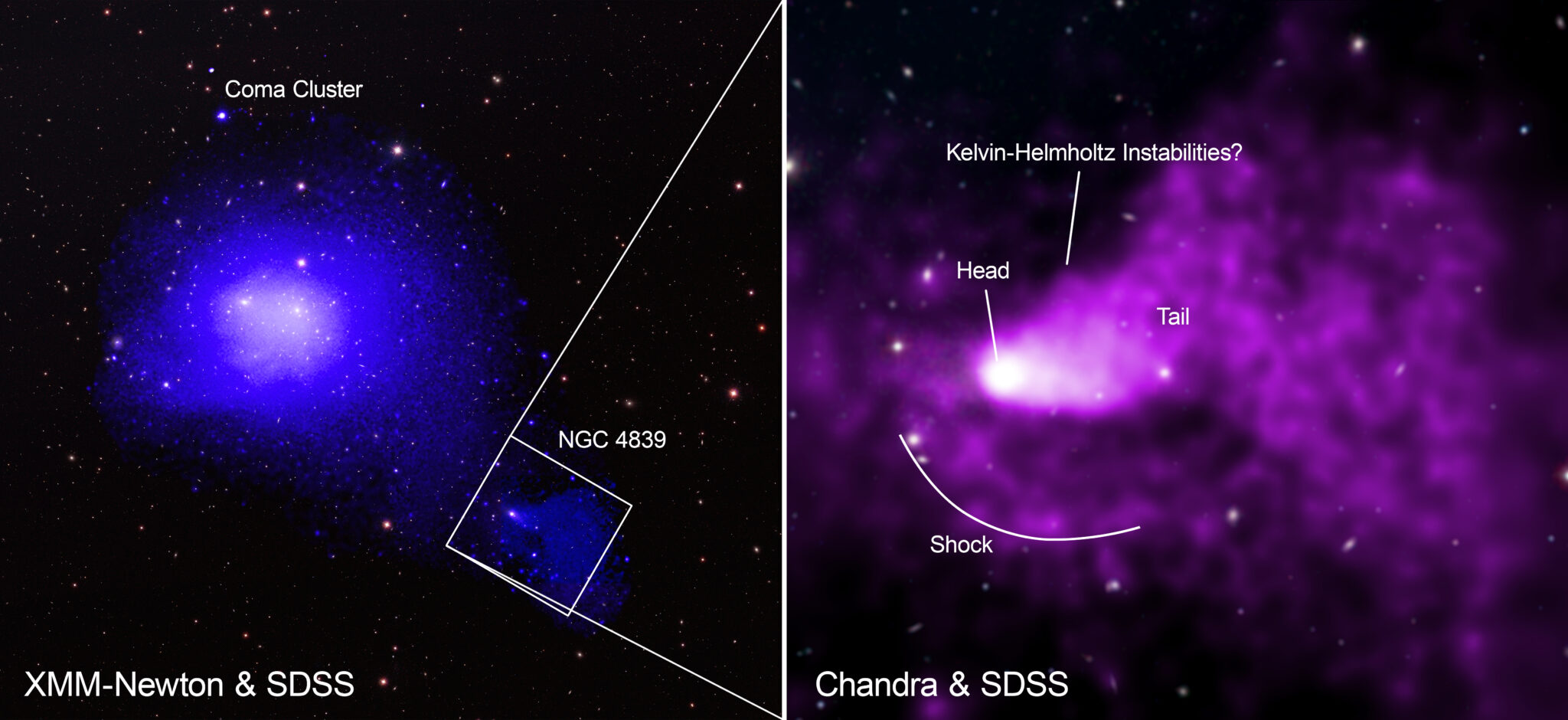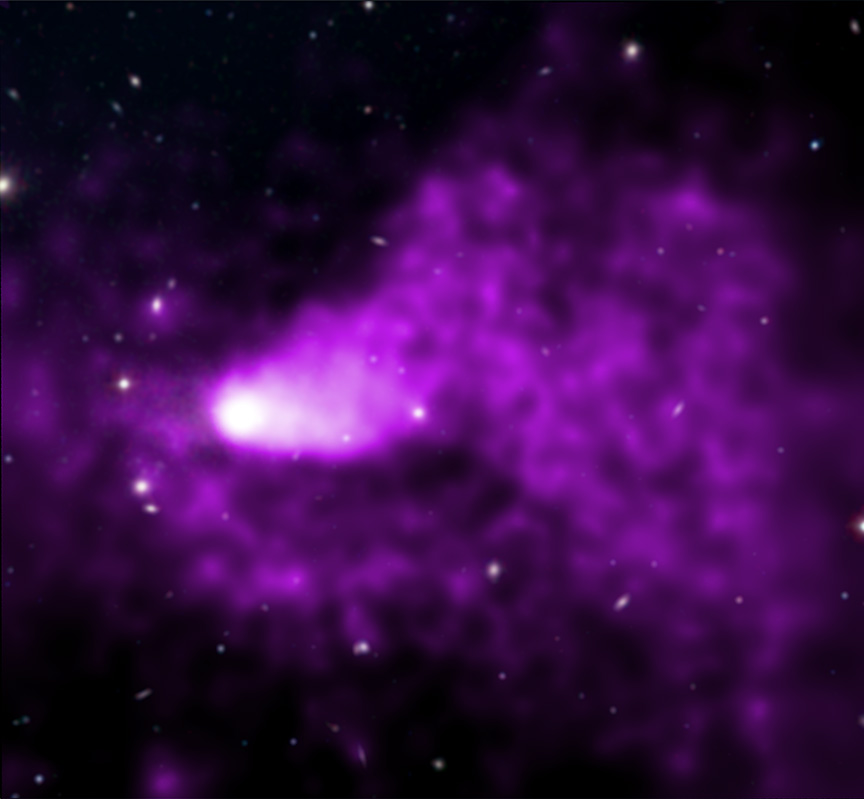The Chandra X-ray telescope has managed to photograph a giant tail of superheated gas trailing behind a group of NGC 4839 galaxies. To date, this is the largest such structure known to astronomers.

NGC 4839 is a group consisting of about 50 galaxies. It is located on the edge of the Coma cluster, one of the largest known galactic clusters in the Universe, located at a distance of 340 million light-years from Earth. The cluster has at least a thousand galaxies.
Both NGC 4839 and the Coma cluster are surrounded by a huge amount of hot gas. It is a powerful source of X-ray radiation. Despite the fact that the structures consisting of gas seem thin and diffuse, in fact they account for a significant part of the mass of the cluster.
NGC 4839 is moving towards the center of the Coma cluster. This process is accompanied by a collision of the surrounding gas clouds, which in turn leads to the formation of a tail of superheated gas, which can be compared to a Kelvin trail. To study this tail, astronomers used the Chandra X-ray telescope.

Chandra coped with the task assigned to it. The telescope has managed to photograph the tail, which is 1.5 million light-years long, comparable to the distance between the Milky Way and the Andromeda galaxy. To date, this is the largest such structure found by astronomers.
The researchers also managed to detect a shock wave similar to the sonic boom of a supersonic jet plane, showing that NGC 4839 is moving through a cluster of galaxies at a speed of about 1340 km/s. They also found possible evidence for the existence of structures called Kelvin-Helmholtz instabilities. Scientists find these structures in various conditions in space and on Earth, including in the form of clouds. They arise due to the difference in the velocity of adjacent layers of moving gas or liquid. The presence of Kelvin-Helmholtz instabilities in NGC 4839 suggests that the gas in the tail has a weak magnetic field or a low viscosity level.
Earlier we talked about how the Chandra and James Webb telescopes joined forces to photograph some of the most iconic deep space objects.
According to https://www.nasa.gov
Follow us on Twitter to get the most interesting space news in time
https://twitter.com/ust_magazine

